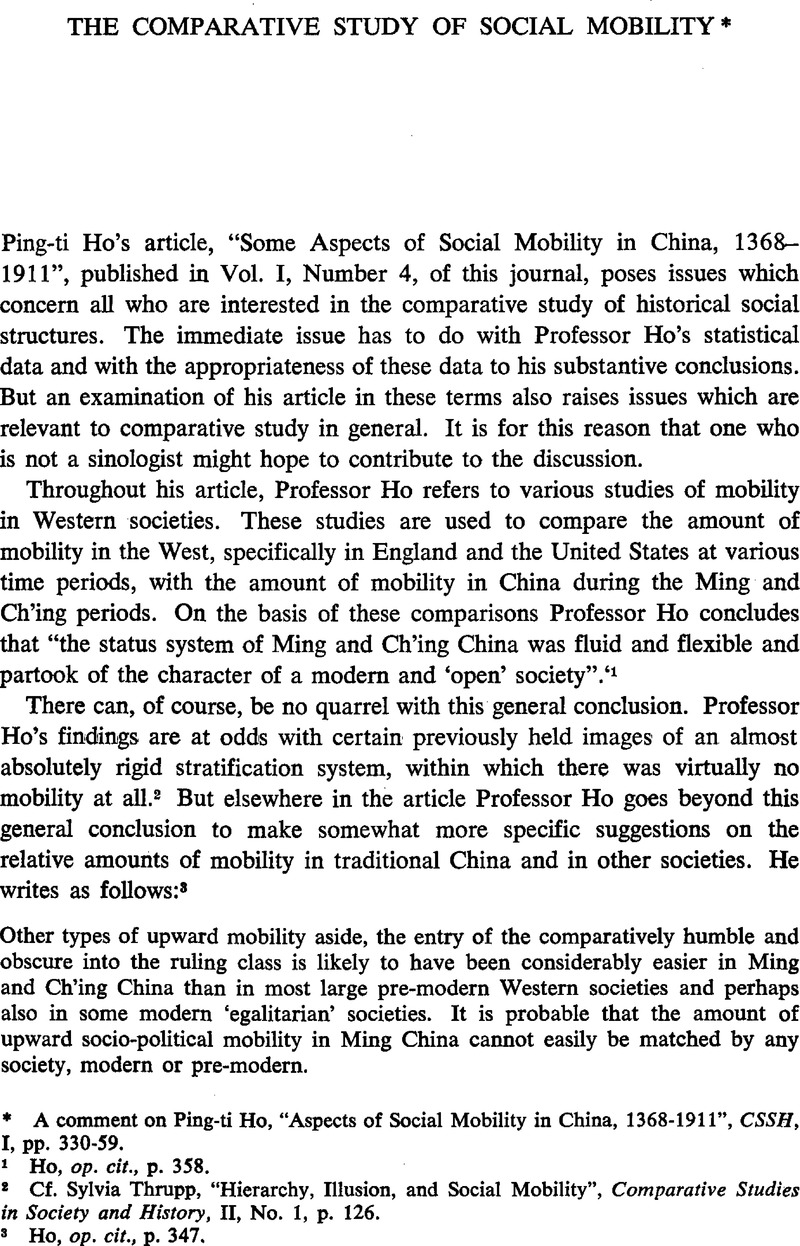Published online by Cambridge University Press: 03 June 2009

1 Ho, op. cit., p. 358.
2 Cf. Thrupp, Sylvia, “Hierarchy, Illusion, and Social Mobility”, Comparative Studies in Society and History, II, No. 1, p. 126.Google Scholar
3 Ho, op. cit., p. 347.
4 Rogoff, Natalie, Recent Trends in Occupational Mobility (Glencoe, 1953).Google Scholar
5 These four categories represent the following combinations of Miss Rogoff's categories. The first is a combination of her “Professional” and “Proprietors, Managers, and Officials”. The second is a combination of her “Semi-professionals” and “Clerical and Sales”. The third is a combination of her “Skilled workers” and “Farmers”. The fourth is a combination of her “Semi-skilled workers”, “Unskilled workers”, “Personal service” and “Protective service”. Both the collapsing of Miss Rogoffs ten categories into four broad categories and the ranking of the collapsed categories were based on outside information on occupational rankings, although this is obviously a rough procedure and should not be taken too literally.
6 Ho, loc. cit., p. 346.
7 Ibid., pp. 348–349.
8 Ibid., p. 348.
page 321 note 1 Cf. my Studies on the Population of China, 1368–1953 (Cambridge, Mass., 1959), passim, and Chapters III and VI of my forthcoming book Aspects of Social Mobility in China, 1368–1911.Google Scholar